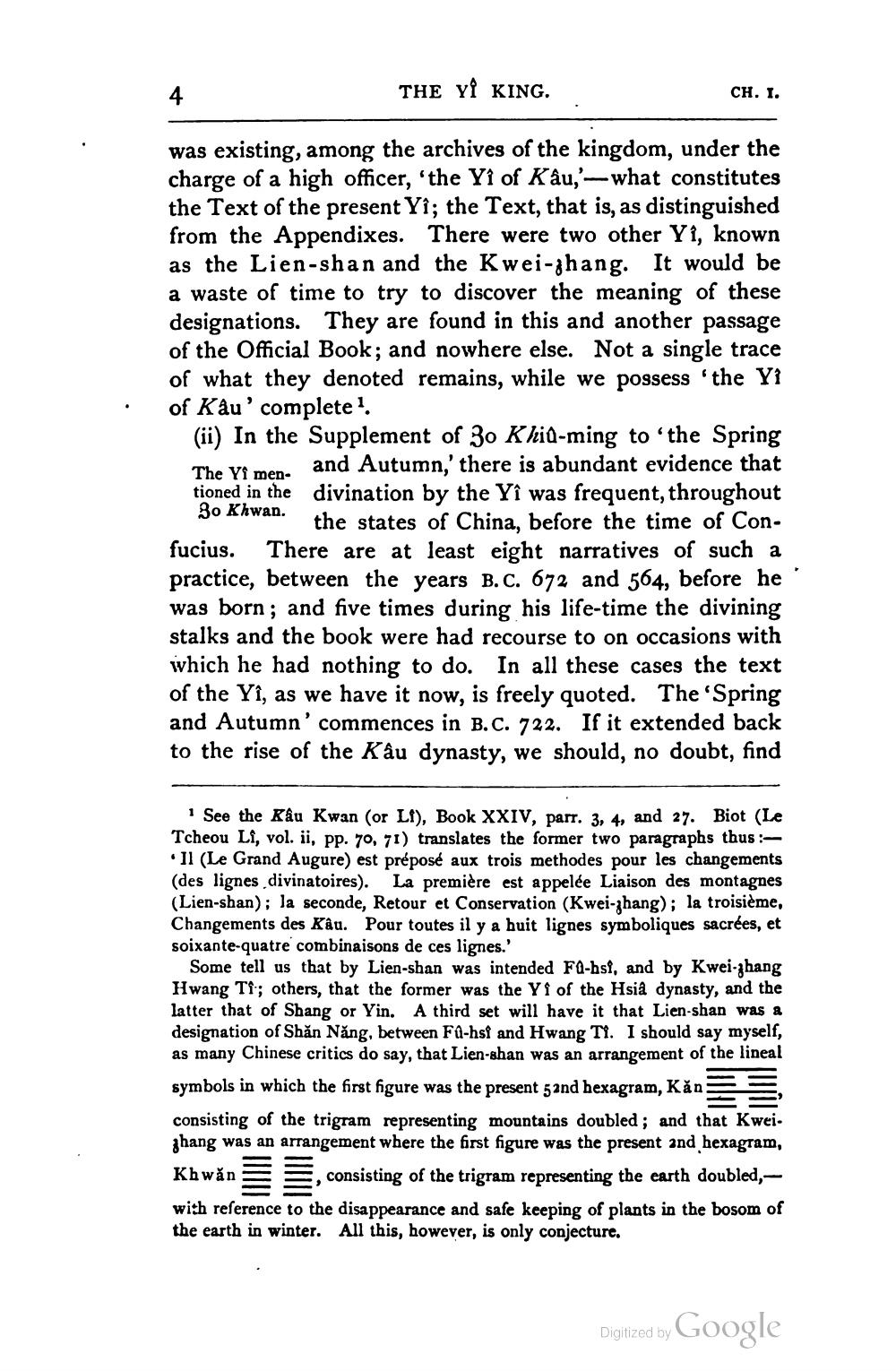________________
THE YI KING.
CH. 1.
was existing, among the archives of the kingdom, under the charge of a high officer, 'the Yî of Kâu,'-- what constitutes the Text of the present Yî; the Text, that is, as distinguished from the Appendixes. There were two other Yi, known as the Lien-shan and the Kwei-ghang. It would be a waste of time to try to discover the meaning of these designations. They are found in this and another passage of the Official Book; and nowhere else. Not a single trace of what they denoted remains, while we possess 'the Yi of Kâu' completel.
(ii) In the Supplement of 30 Khid-ming to the Spring The Vs men. and Autumn,' there is abundant evidence that tioned in the divination by the Yî was frequent, throughout
sanad the states of China, before the time of Confucius. There are at least eight narratives of such a practice, between the years B.C. 672 and 564, before he was born; and five times during his life-time the divining stalks and the book were had recourse to on occasions with which he had nothing to do. In all these cases the text of the Yî, as we have it now, is freely quoted. The 'Spring and Autumn' commences in B.C. 722. If it extended back to the rise of the Kâu dynasty, we should, no doubt, find
See the Râu Kwan (or Lf), Book XXIV, part. 3, 4, and 27. Biot (Le Tcheou Li, vol. ii, pp. 70, 71) translates the former two paragraphs thus :• Il (Le Grand Augure) est préposé aux trois methodes pour les changements (des lignes divinatoires). La première est appelée Liaison des montagnes (Lien-shan); la seconde, Retour et Conservation (Kwei-zhang); la troisième, Changements des Kâu. Pour toutes il y a huit lignes symboliques sacrées, et soixante-quatre combinaisons de ces lignes.'
Some tell us that by Lien-shan was intended Fa-hsf, and by Kwei-zhang Hwang Tir; others, that the former was the Yi of the Hsia dynasty, and the latter that of Shang or Yin. A third set will have it that Lien-shan was a designation of Shăn Năng, between Fa-hsi and Hwang TY. I should say myself, as many Chinese critics do say, that Lien-shan was an arrangement of the lineal symbols in which the first figure was the present and hexagram, Kan= consisting of the trigram representing mountains doubled; and that Kwei. ghang was an arrangement where the first figure was the present and hexagram,
E , consisting of the trigram representing the earth doubled, with reference to the disappearance and safe keeping of plants in the bosom of the earth in winter. All this, however, is only conjecture.
S
Khoản
Digitized by Google




